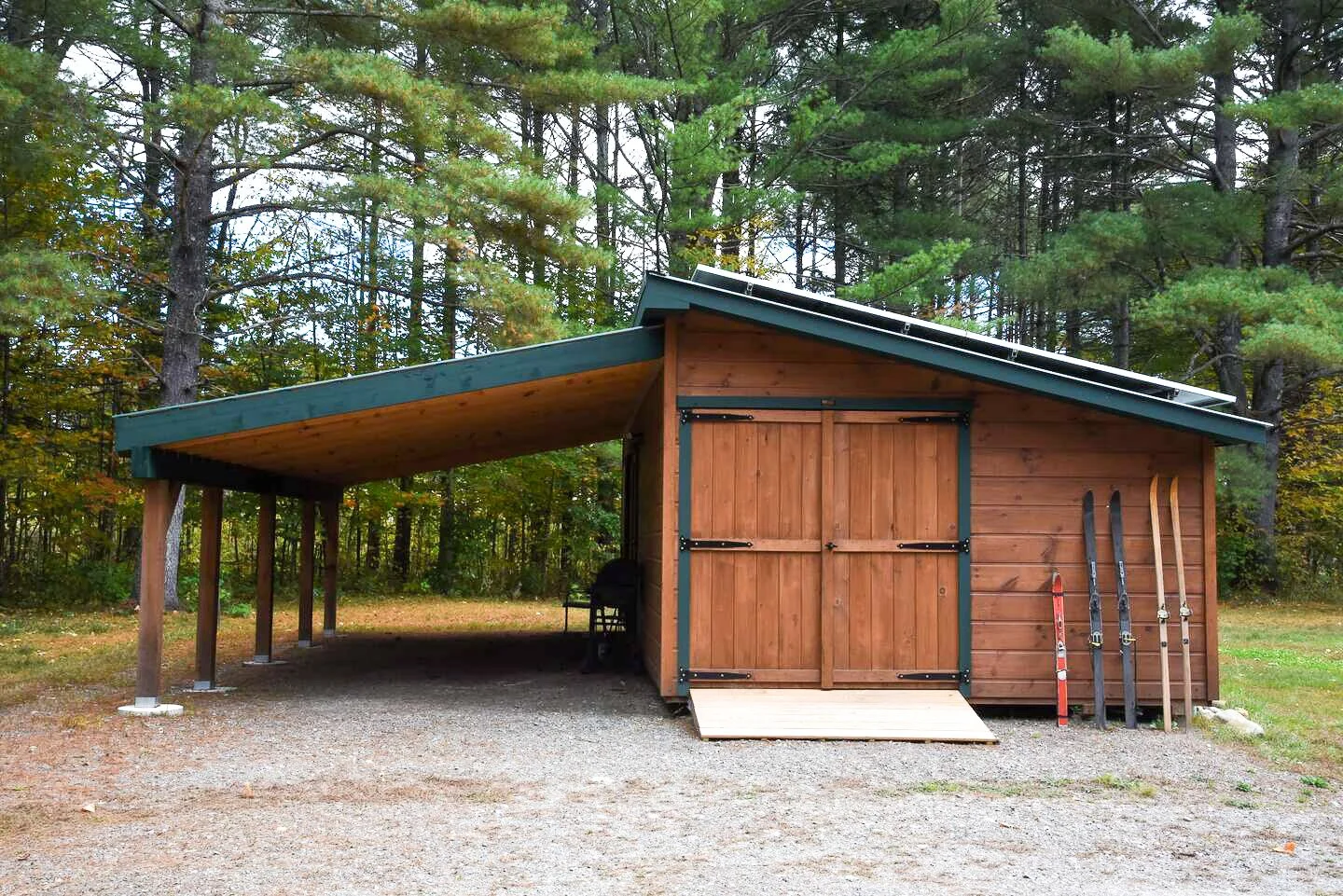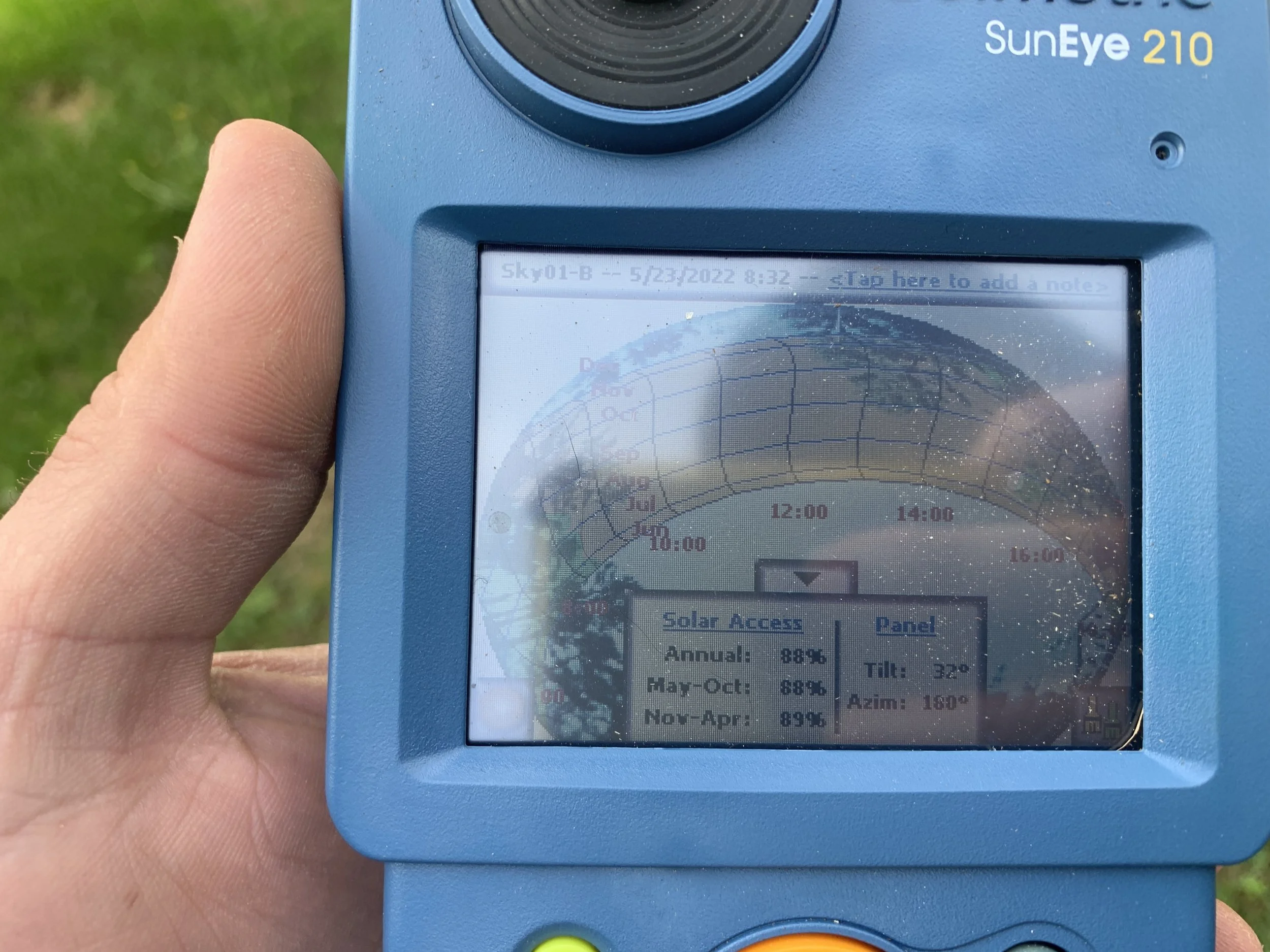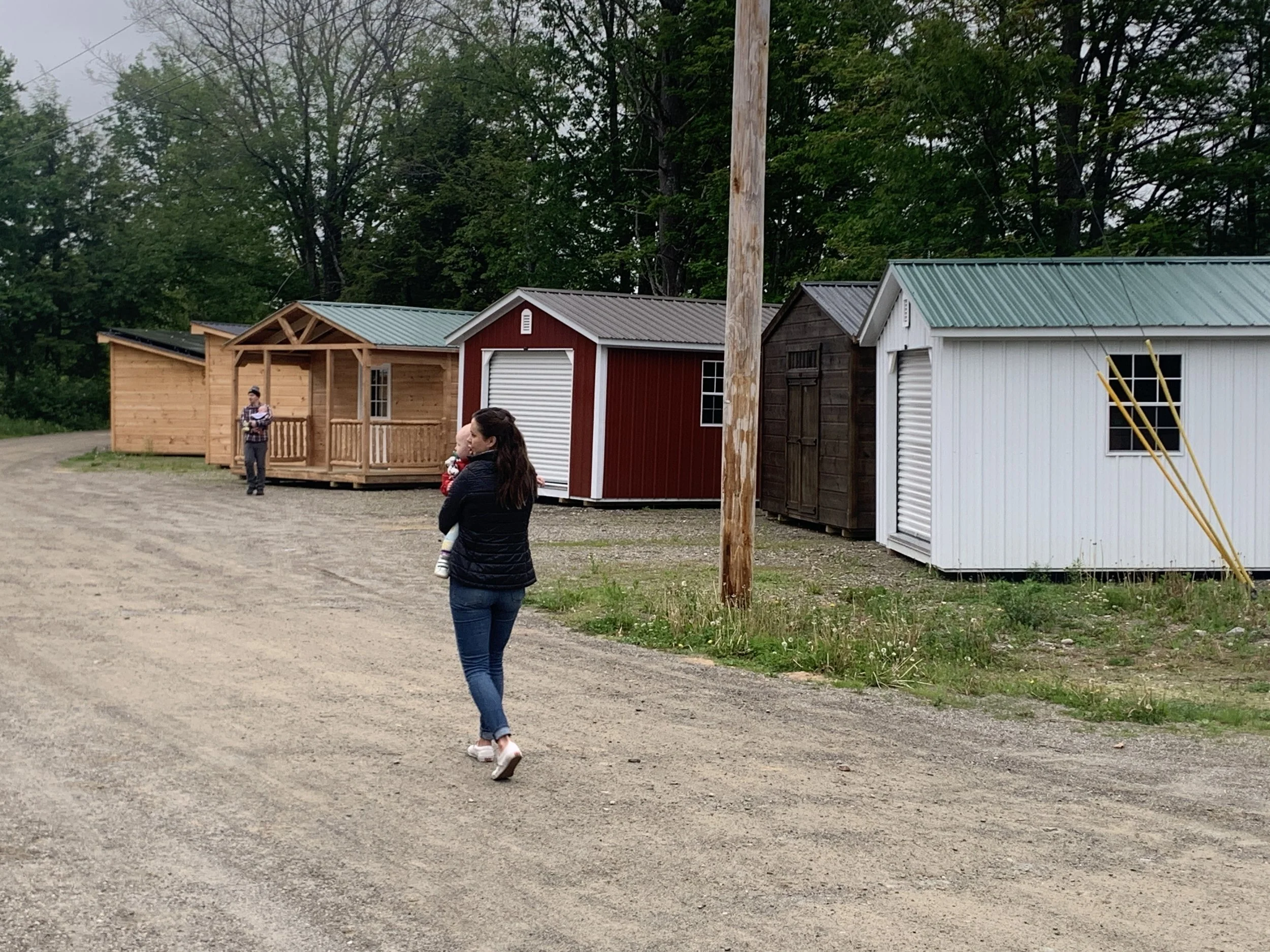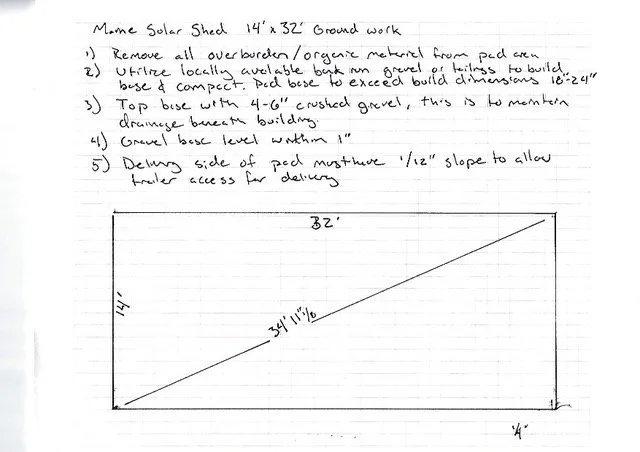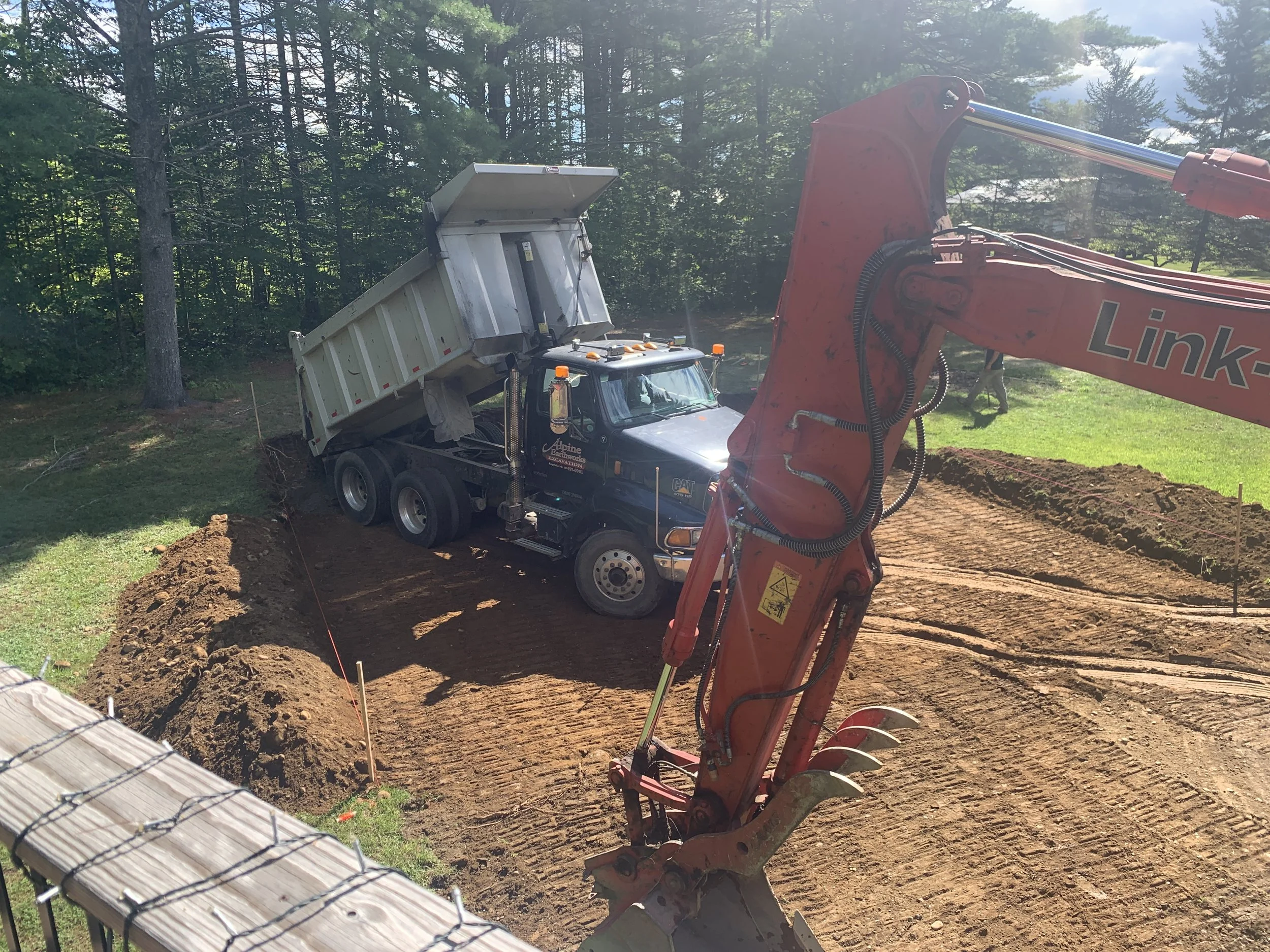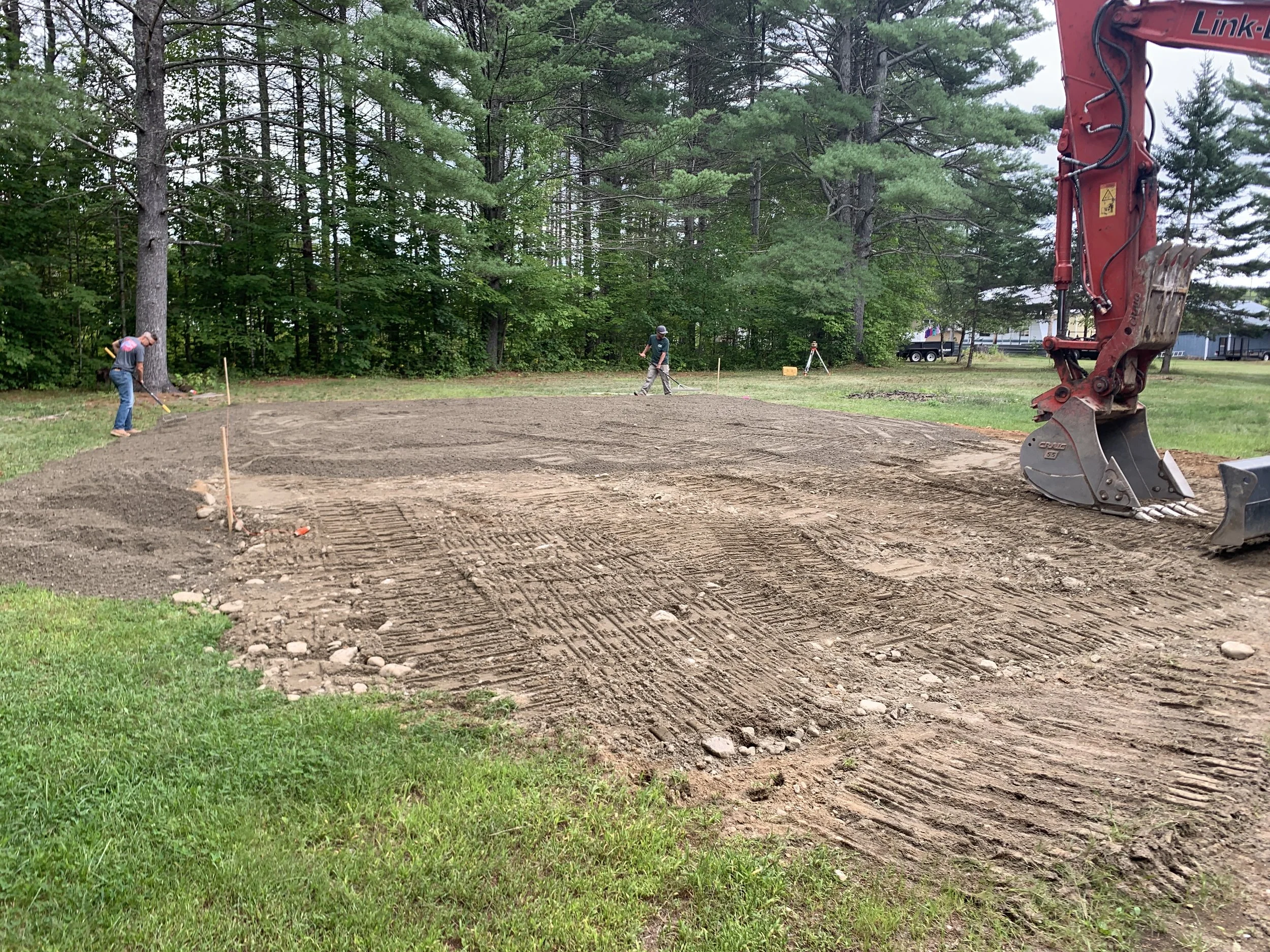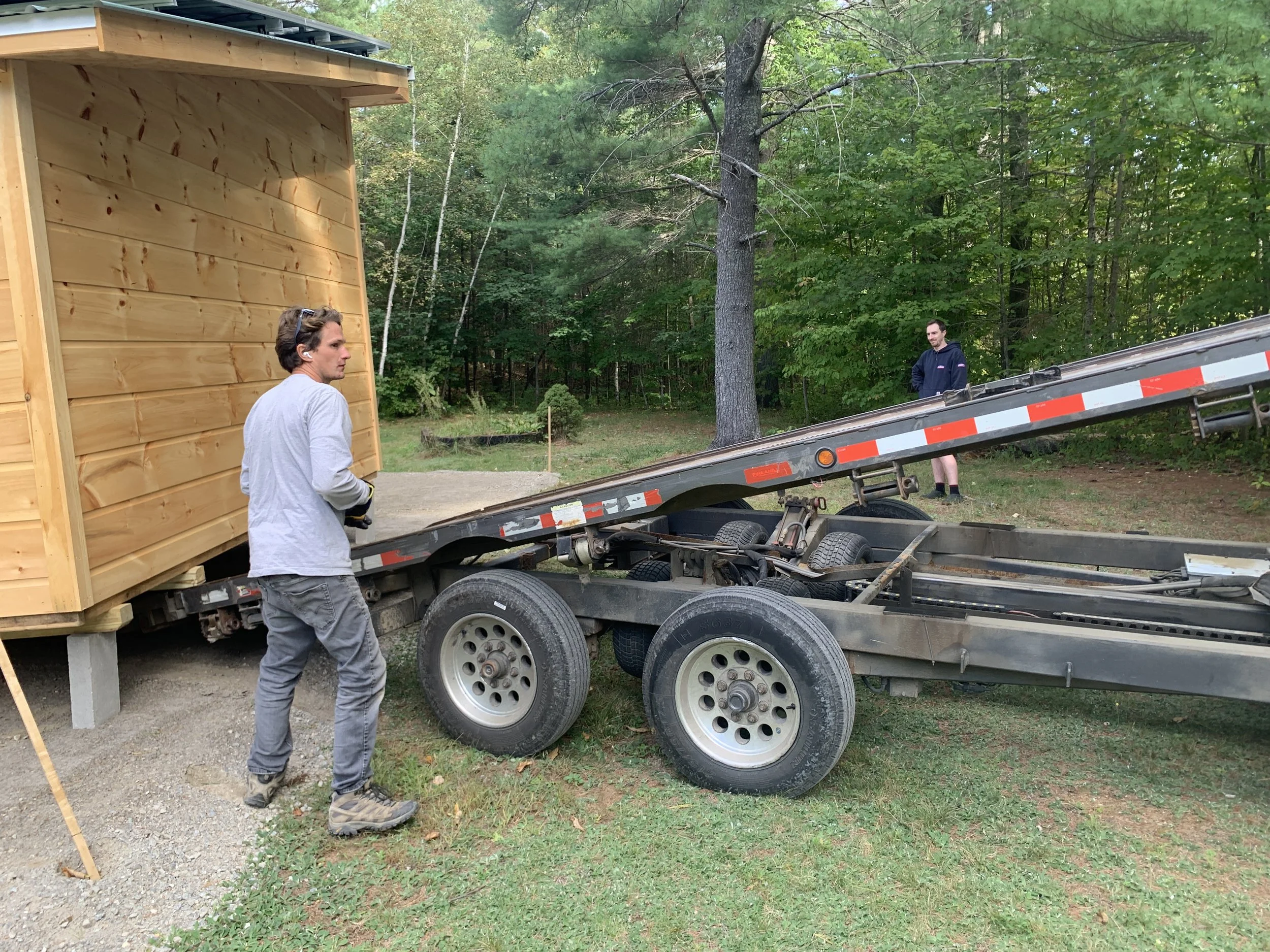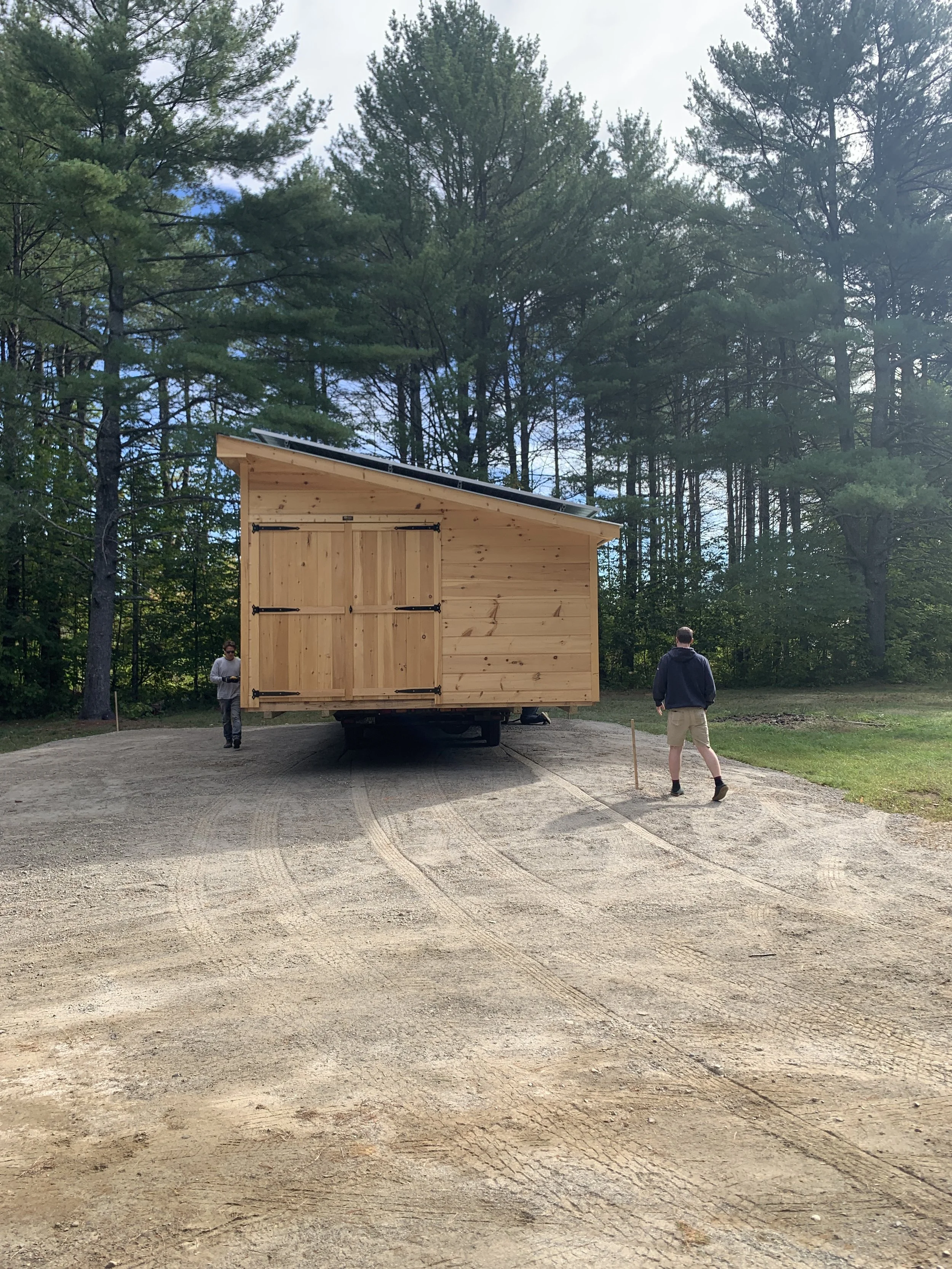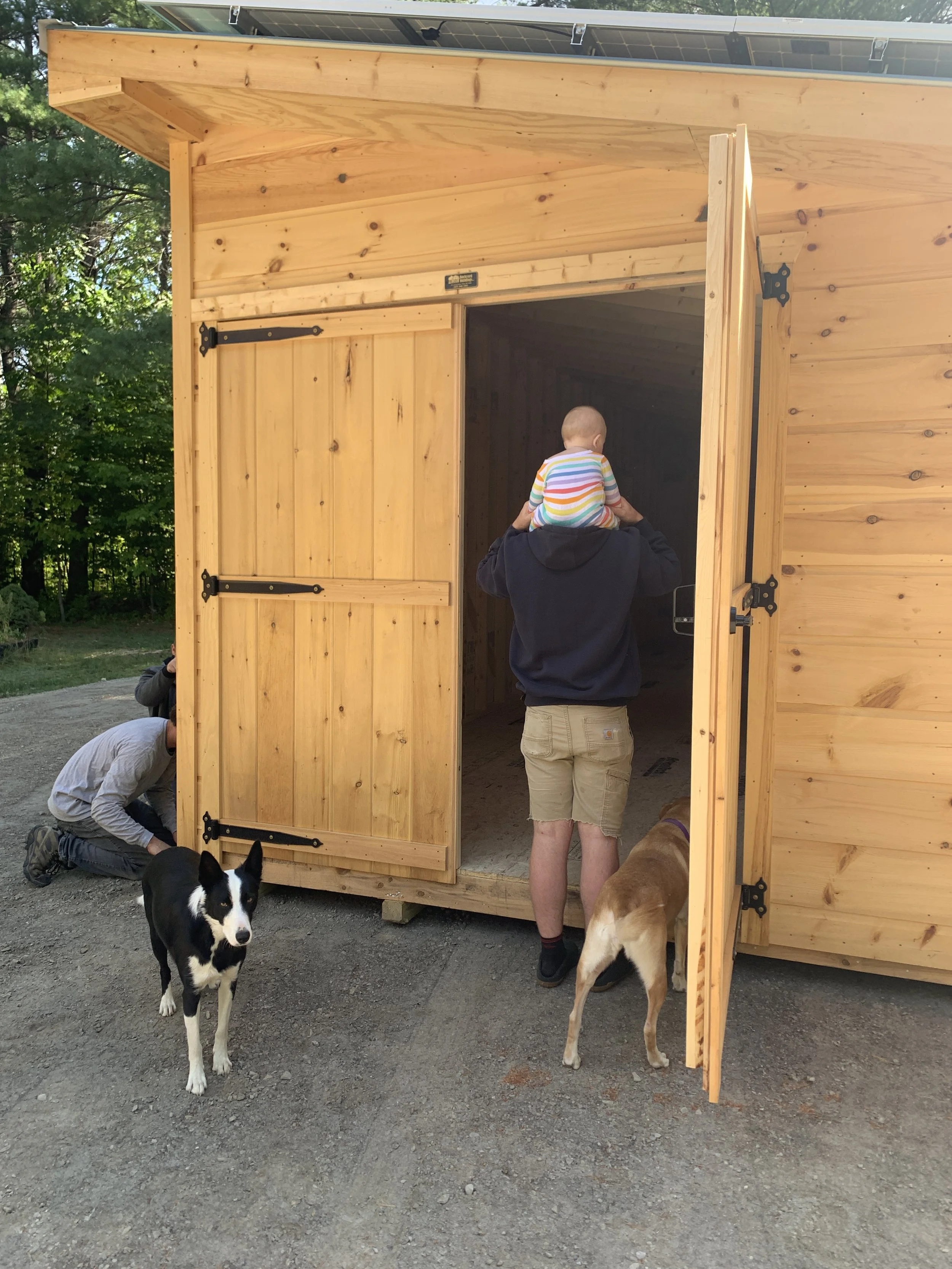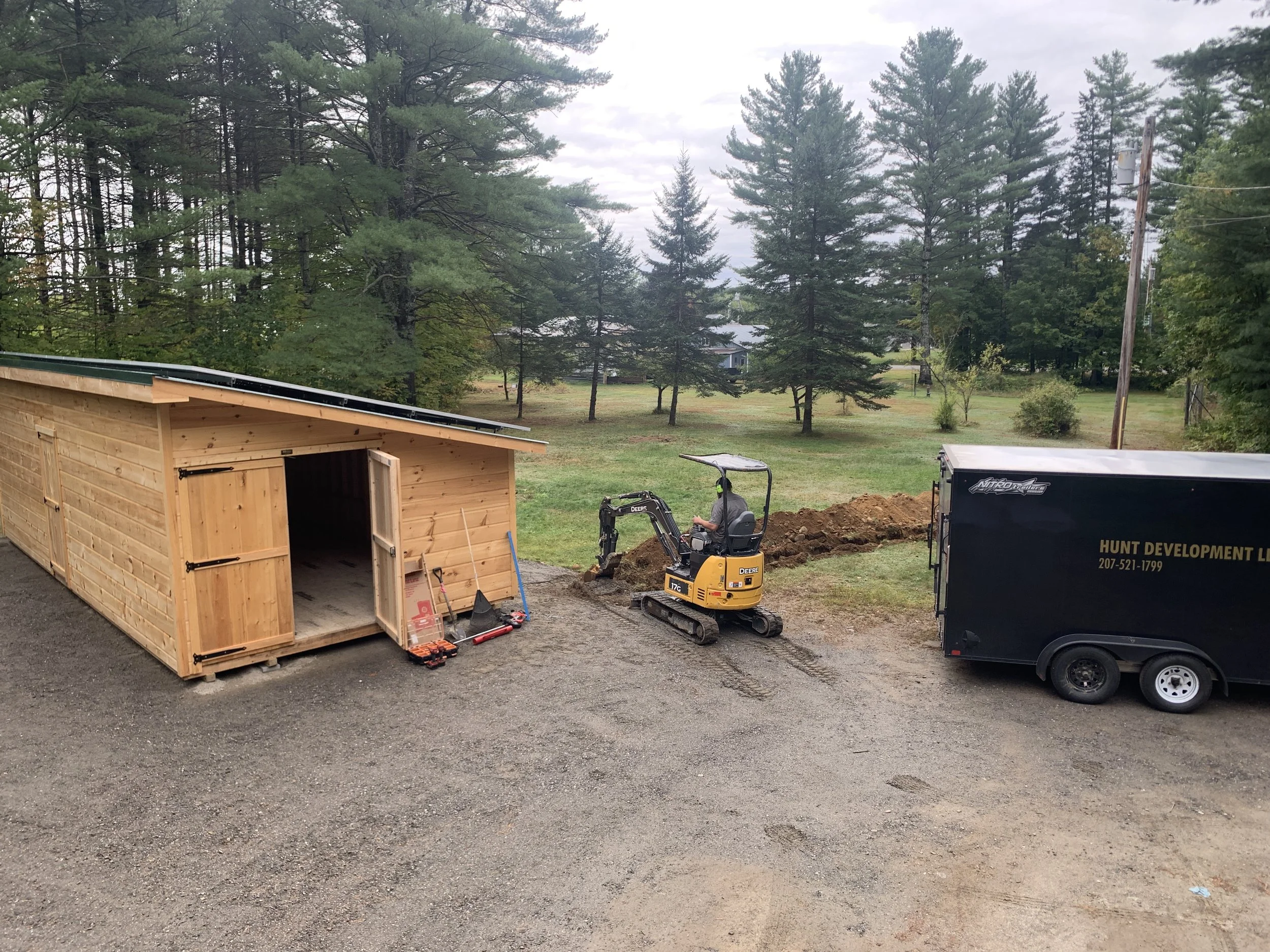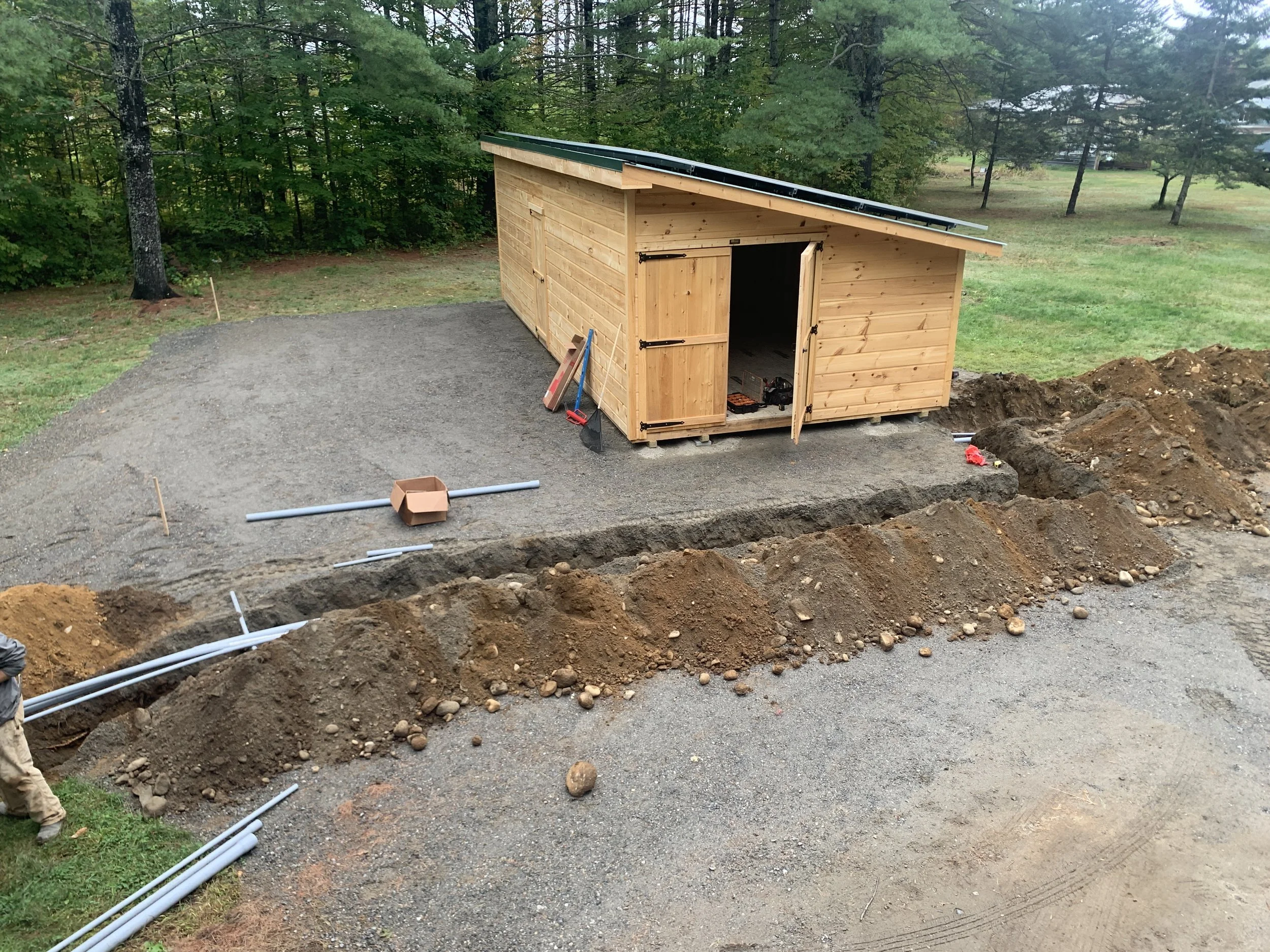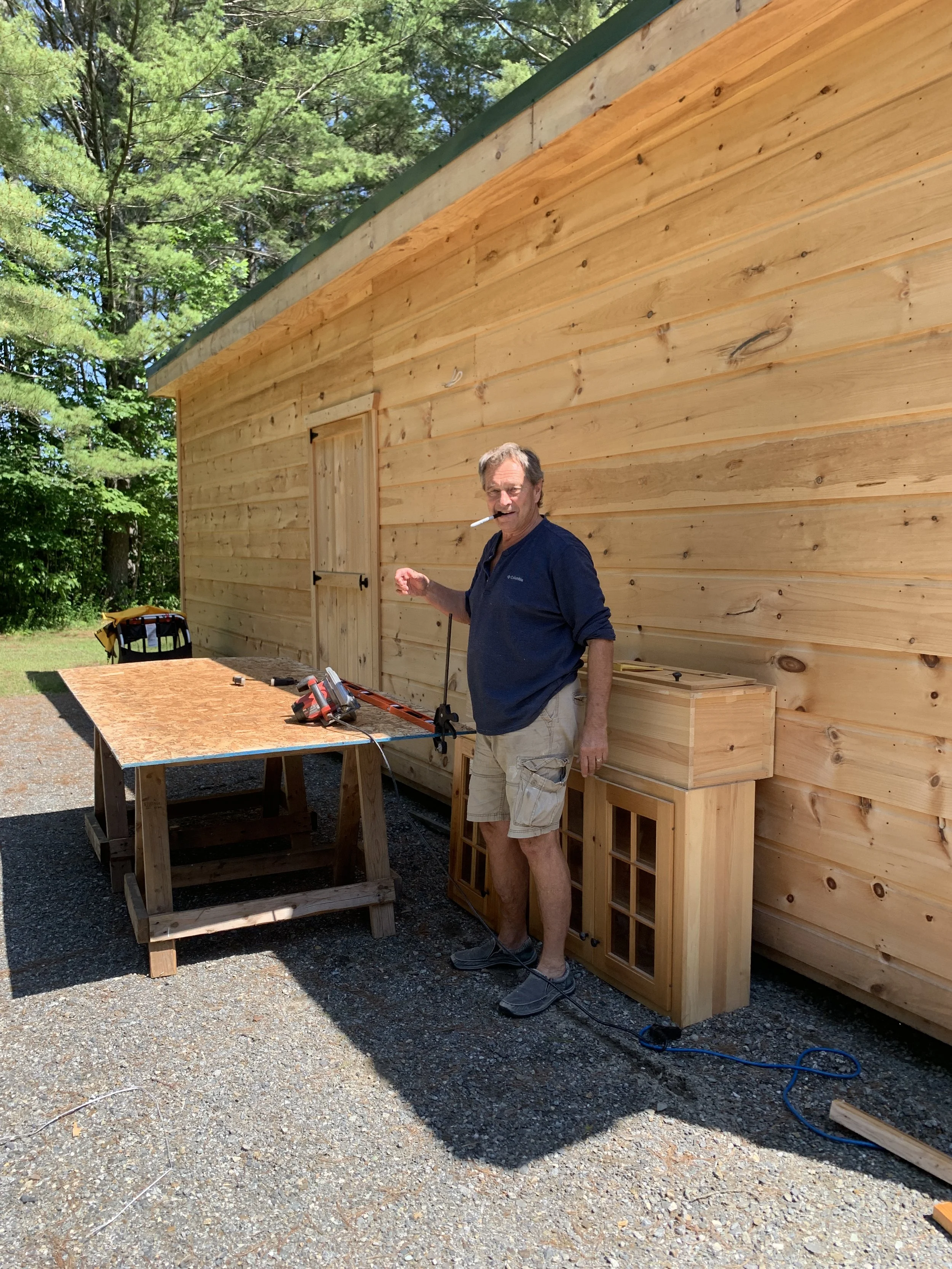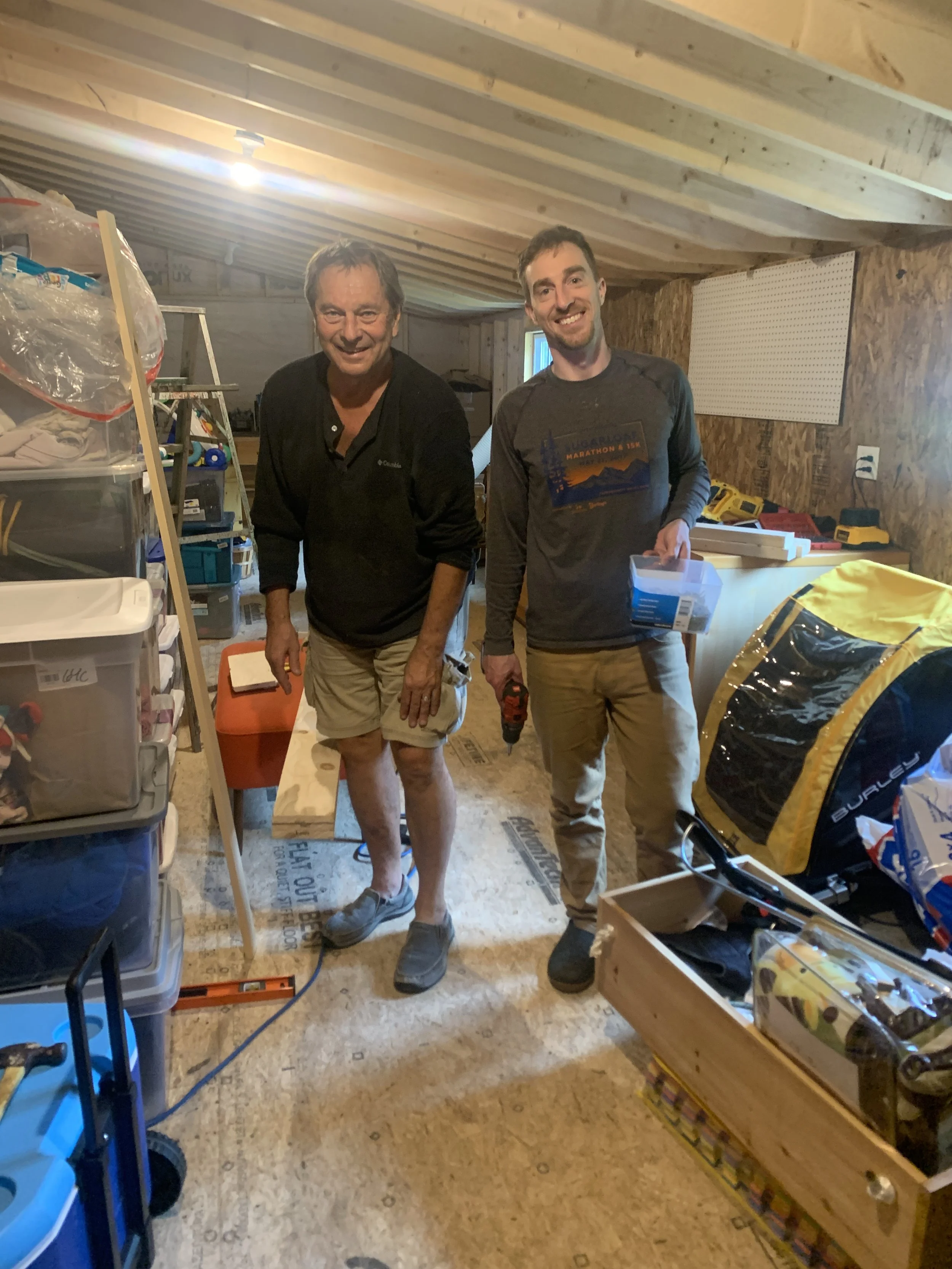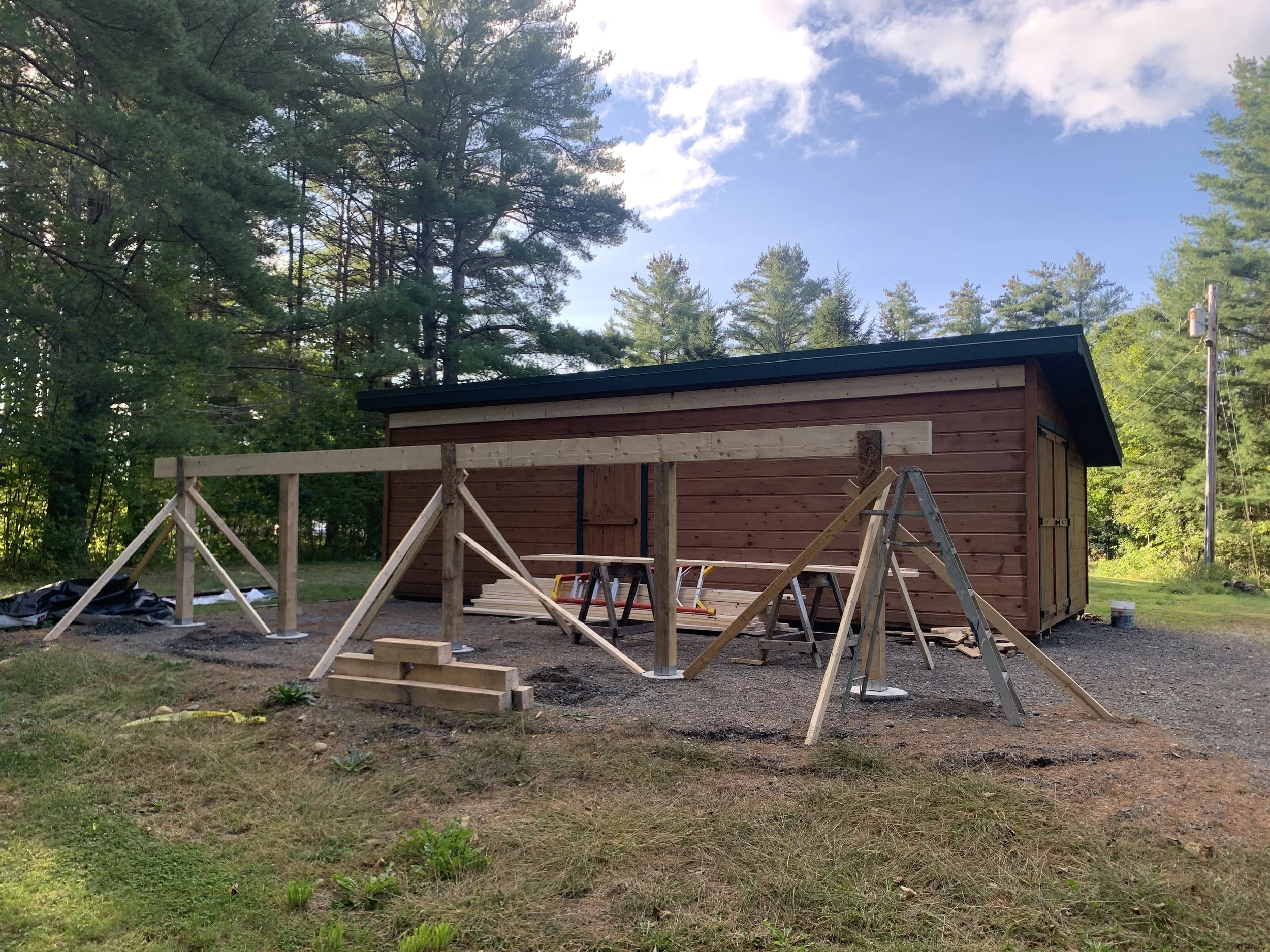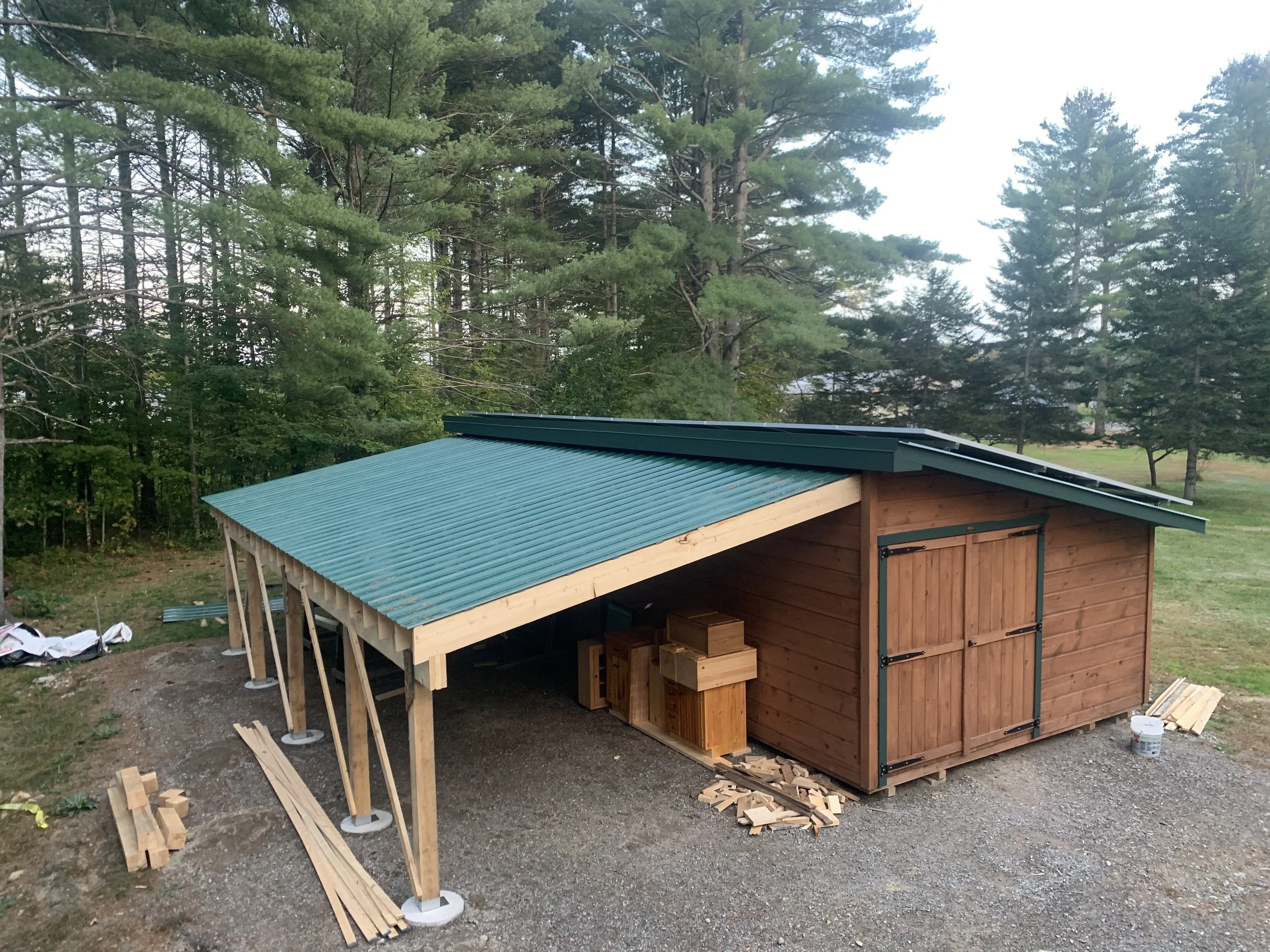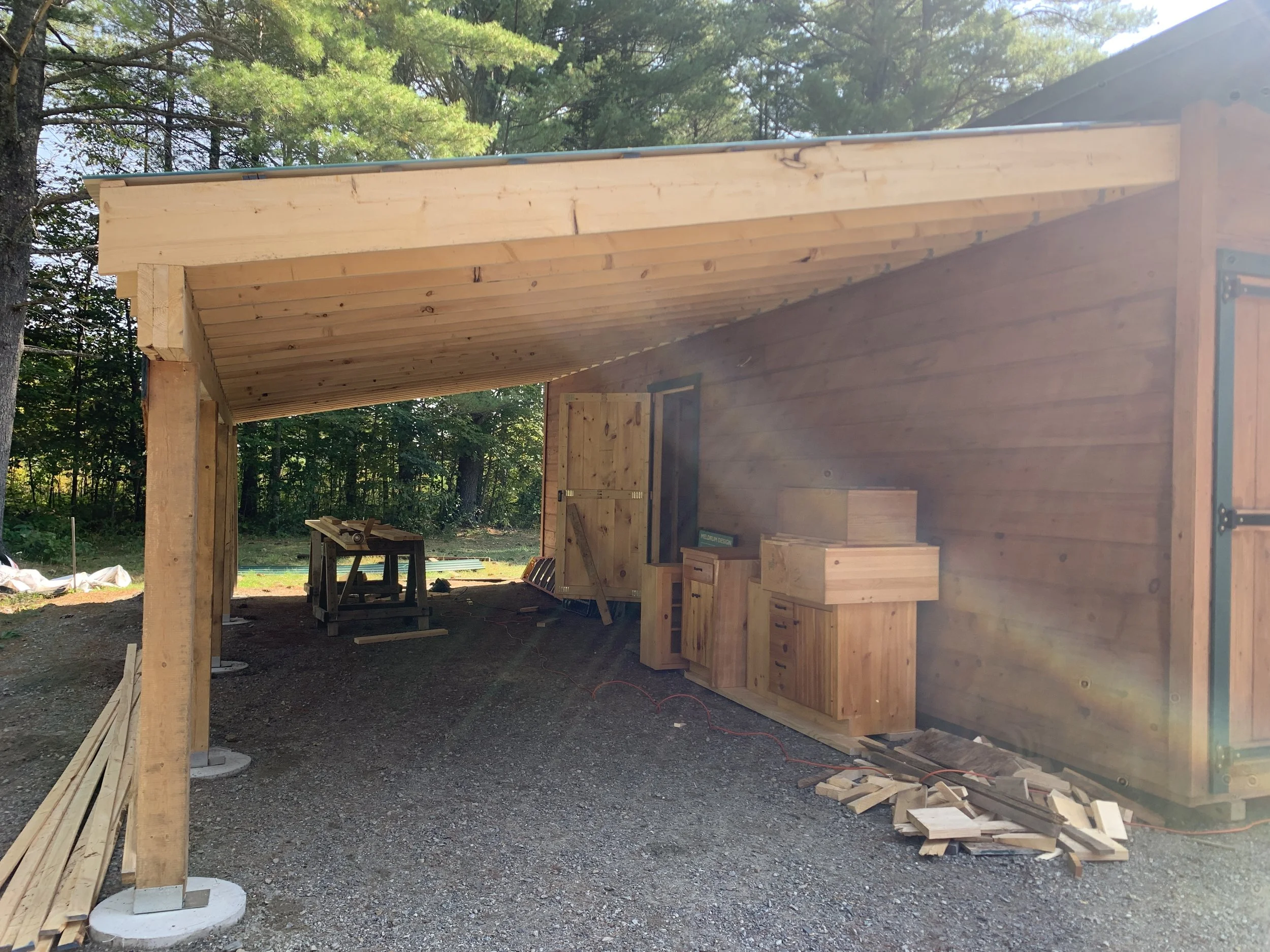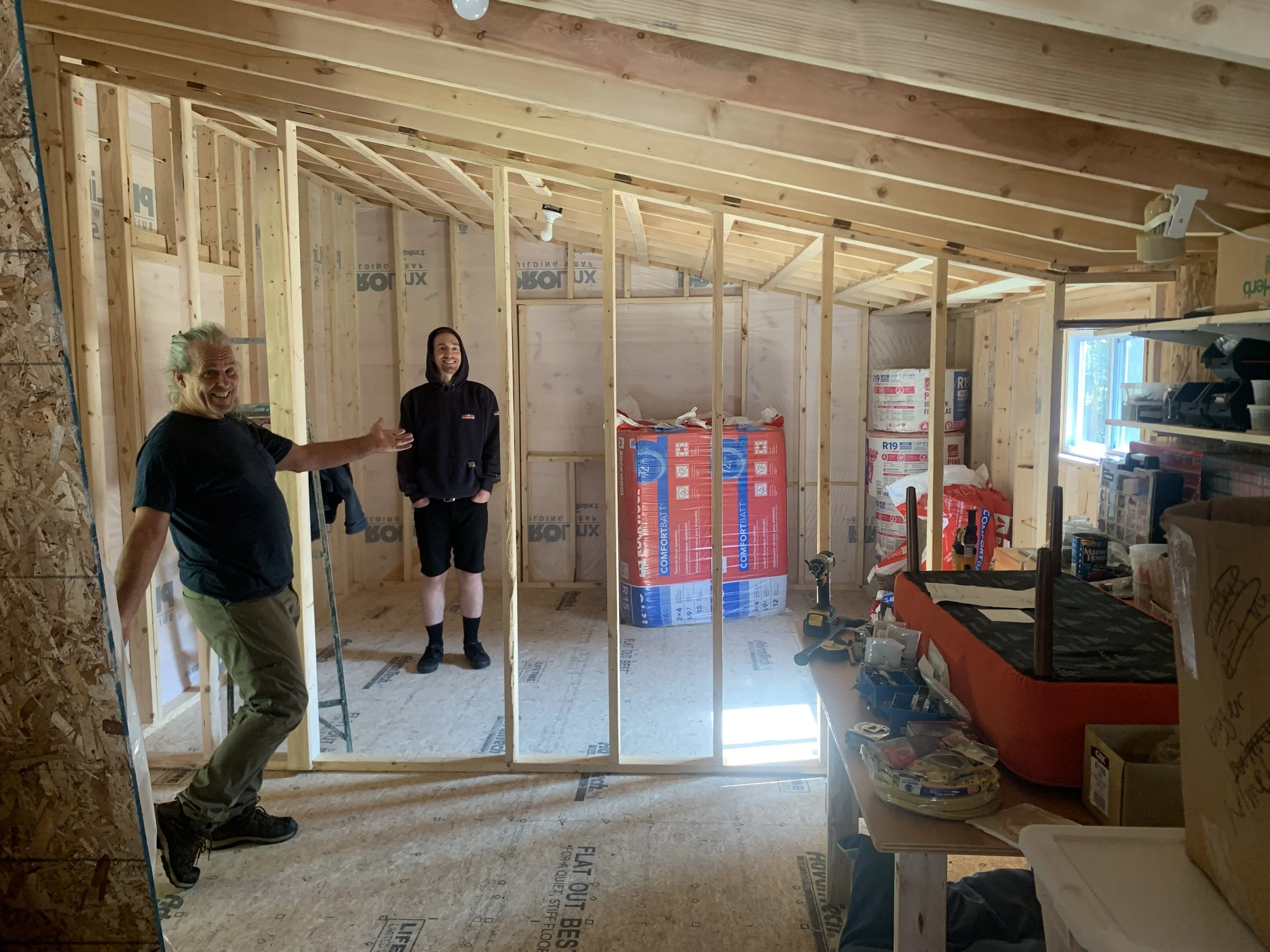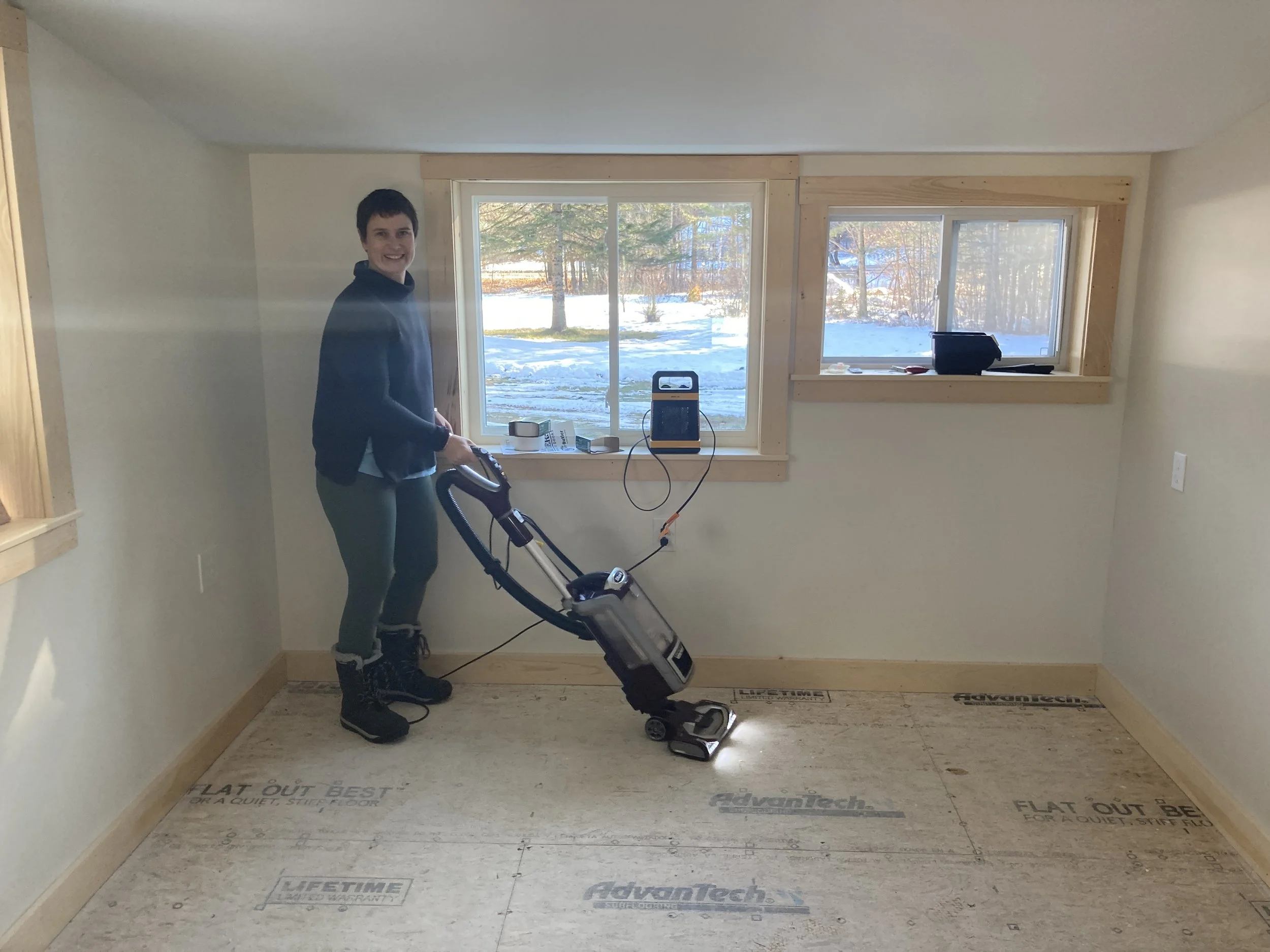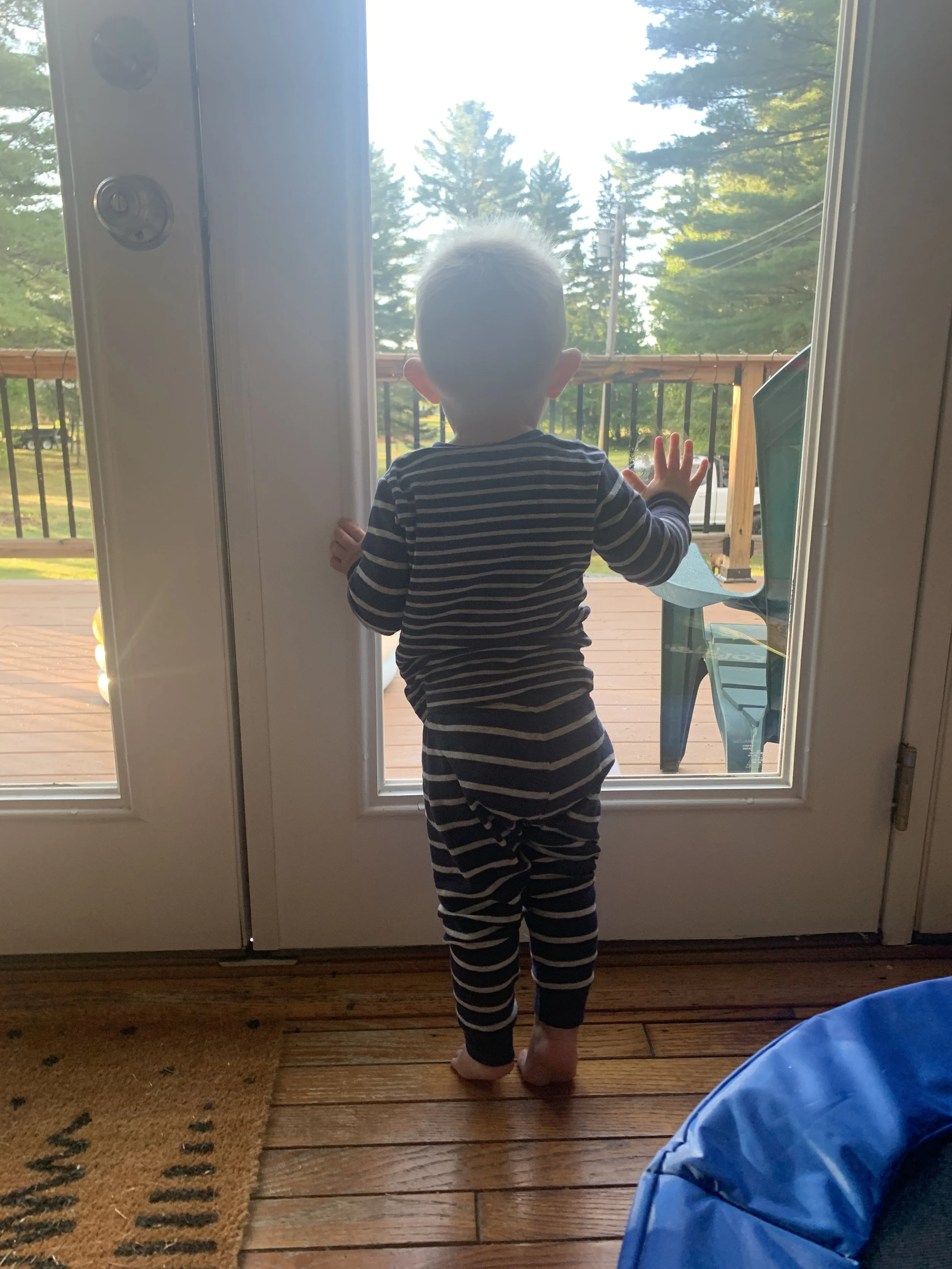Building a Solar Shed in Western Maine
The finished product.
Solar panels have been on my radar for many years. I’ve included them in several residential and commercial projects. A couple of my favorite benefits are that they can offset the cost of an all electric (no fossil fuel) house and that they produce energy right on site, where it will be used.
I had not considered solar panels for our own modest home because they felt out of reach, until I read an article in a green building magazine (I wish I could remember which one!). The article presented several ways to power your house with solar.
Considering Solar for Your Home
First we signed up for a community array. It was a horrible experience. The sign-up was quick and easy and we even got a free $25 visa gift card. But then we didn’t hear from them for years. I presume that that time was spent funding, permitting, and building this particular community array but it was very hard to find updates on the situation. Finally one day, we just started seeing 15% off of our electricity bills. Which probably would have been great if we hadn’t already got our own panels up and running by then! Of course, it was very difficult to get out of the community solar once we’d signed on.
So in the time we were waiting for our community solar array to kick in, we decided to take matters into our own hands. We wanted energy produced on our own land. But could we afford it?
Our house does not have a south facing roof. We do have a south facing wall of windows which is incredible for heating the house with winter sun. But I digress…
A ground-mounted solar array was our only option. But how, exactly, should we mount the panels? Ground mount arrays can be supported by utilitarian metal frames. If you’ve ever seen a solar farm, you know what these look like. They’re ugly.
Rather than the metal frames, we could prop the panels up off the ground on a carport roof. That would also give us a place to park and/or play.
Discovering Solar Sheds
As I was researching local installers, I came across Upright Energy and their Solar Sheds. (This is not an ad.) If you’re in the green building sphere in Maine, you may have heard of these people. The product is very cool. The people are even cooler. (Highly recommend.) I still stay in touch with Matt, he even reviewed this blog post before it published!
When I saw the solar sheds, I knew this was our answer. We could create a new indoor space that would support our small home.
It took a few years to finish, but our 14’x32’ shed now houses a workshop and storage area as well as our office. We also built a carport off the north side that fits two cars parked tandem. It is a work horse and we love it. And are you forgetting? There are solar panels on the roof that power our whole property!
How To Build a Solar Shed
Here’s how the process worked with this company. (I think it’s kind of a genius business model.)
Upright Energy came to our house to see if we were a good candidate for on-site solar. We are lucky to have a large, south-facing open space on our property. With their fun tech tools, they were able to find and stake out a south-west facing footprint for the future shed that looked like it would give us great sun exposure.
Matt staking out our shed footprint.
Fun tech that predicts our solar gains.
From there, Upright Energy partnered with a local Amish community, Backyard Builders in Unity, ME. They build sheds of all shapes and sizes. Plus they have an enclosed warehouse that allows them to work through all seasons.
We visited Backyard Builders to design our shed. We had to visit in person because they don’t use computers. The design visit was a fun experience in itself. We came away with a design, a price, and some delicious Amish meat products!
My sister, husband, and two babies all enjoyed the design visit, too!
Our Shed
We wanted a design that was as flexible as possible because, at the time of design, we weren’t totally sure which purpose it would serve.
It was built with insulation under the floor and two layers of floor sheathing in case we ever wanted to park something heavy in there. (A car? Workout equipment?) There were two small windows, two person-doors, and one large door to load big things. (A car? Bike things?)
There was no insulation in the walls or roof because that’s a relatively easy DIY.
Our shed has a single pitch roof. The roof pitch and wall height were designed so it’s short enough to be towed on the highway which is, unfortunately, a limiting factor in the angle and productivity of the panels.
The shed from Backyard Builders cost *$16,266.
It’s important to note that this shed was built during COVID when the supply chain was broken and there was a 15% ($1,883) surcharge included in the overall cost.
Our Solar Array
Once the builders finished the shed, the solar installers and electricians used the clean, dry warehouse to install the array.
We have a 9.1kW solar array which was predicted to produce 10,500kW per year. Because we don’t have sunny weather year round and we have some tree coverage, these panels have actually only been producing about 7,250 kW per year for the last two years. Thankfully, that’s enough for what we need. We purposely oversized our system because we thought this might happen. It was minimal additional cost for a few “extra” panels.
The Site Work
While the shed was being constructed, we prepared our property.
The earthwork and materials for the pad cost *$4,200.
These were the specifications for the pad under the shed. We made the pad much wider to accommodate the future carport.
Site work begins.
Dump truck AND excavator. Primo entertainment for my truck obsessed kids.
Almost done.
Back at the building warehouse… Once the panels were installed, the shed was towed to our property on one of the coolest trailers I’ve ever seen. It articulated in every direction, side to side, up and down, forward and back. Controlled by hand held remote. Fascinating.
The person who towed our car was mennonite. He had a working relationship with the amish community.
Shed delivery, it was an exciting day.
Humans and dogs checking it out.
Getting Tied Into the Grid
Once the shed was delivered, we began the process of connecting it to the grid.
We decided on a grid-tied system because of our seasonal climate. We do not produce enough power in the winter to cover our winter energy needs. Tying to the system gives us credits during the summer which we use through the winter.
Instead of being grid-tied, we could have installed a few big batteries. But batteries generally only hold a day or three of energy needs during the winter. A long, dark couple of weeks could mean we were living without power. Not to mention that the environmental and human rights impact of battery production is significant.
The electrical work for this project was more extensive than most. We had an existing overhead electrical line to our house. Where it connected to the house (mast on top of the roof) was in rough condition. It was on our list of fixes when we bought the house.
With this solar project, we decided to move our electric meter to the shed and the electrical line underground. Two birds, one stone.
The electrical hookup and extras on this project cost *$7,943.
Electrical pole to the new meter at the shed.
New meter back to the house.
When the electricians left, we were done!
Haha, not!
Finishing Touches
It took about a year and a half to build out the workshop, office, and carport. I won’t share those costs but they were reasonable. My dad flew out to help husband build the workshop. (Thanks dad!) I salvaged most of the workshop supplies from a demo’ed kitchen on one of my projects. Husband got the lumber at a deep discount from the place he was working at the time. And we have a builder friend who’s been giving us a sweet deal for years. (Thank you Chrissy!) Being in the construction industry does have its advantages.
Dad cutting sheathing for the interior wall finish.
Dad and husband building out the storage racks.
Our builder friend, Chrissy, built the carport.
Simple materials and construction made for an affordable and functional carport.
Look at all this covered space! What a thrill.
Chrissy and Mike in the newly framed office. (I asked Backyard builders to frame out a window in that back wall but not to cut the opening yet.)
Drywall and new windows in the Office!
So many windows, so much natural light. It’s amazing.
One excited business owner. :)
Was It Worth It?
And finally, the moment we’ve all been waiting for, how do the numbers balance out?
Unfortunately, I can’t say.
In fact, I won’t even know the total cost of the solar shed until we’ve paid off the home equity loan we used to finance the project (we hope to pay it off early and avoid some interest costs).
Additionally, this project was bigger than just the solar array. We added a ton of space and value to our property while also fixing our electrical hookup.
Here’s what I can say:
The team built this solar shed over the summer of 2022. It was online and operational in October 2022.
Solar Shed Costs (installed)
- solar system= $19,666
- shed= $16,266
- gravel pad= $4,200
- electrician= $7,943
Gross construction cost= $49,506
- tax incentive= $14,111
Net cost (not including loan interest)= $35,395
Energy Savings
Our panels generate about 7,250 kWh per year. To figure out how much we’re saving is not as simple as I first thought it was. I spoke to our solar guy, Matt, as well as two other solar representatives and they all gave me different numbers ($0.22 to $0.27) for the cost savings per kilowatt hour (kWh) with solar. There is a formula to calculate our number but it involves averaging a number on a bunch of electrical bills and I honestly just don’t have the time. Instead we’re going to go the conservative route and use the number Matt gave me: $0.225 per kWh.
At that rate, our savings= 7,250 x $0.225= $1,631 per year (at least).
So the payoff period for just the solar system ($19,666) is about 12 years (not including loan interest which is not nothing). Not terrible but not amazing either. But that’s assuming electricity rates will stay the same, which they will not. The cost of electricity will likely continue to increase, which will decrease our payoff period.
And honestly, when we started this project, we knew it would not be a windfall. Even with the tax incentive, it’s expensive. But we like that we produce our energy on site. And we like that we’re essentially insulated from big energy rate increases, our costs will remain relatively predictable despite climate change and our country’s deteriorating infrastructure.
Not All Rainbows And Butterflies
There are other factors to consider besides construction costs. The panels are not a set it and forget it situation. There have been some technical issues which, according to Upright Energy, are pretty unusual but did cost us some energy. We (husband) also roof rakes the panels during the winter. If snow accumulates and freezes solid, we do not produce power until that ice thaws. That was an issue for us this past winter when we were away for 2.5 months.
But generally, we are delighted with our solar shed. It’s the perfect addition to our modest property with an incredible amount of function packed into one building. My favorite space is definitely the office where we have tons of natural light and a warm, quiet environment. I also love the carport when it’s snowing. And the fact that we no longer have to pay for our storage unit next door. And the fact that we can run our house without use of fossil fuels which is a great comfort to us environmental nerds.
In the end, I do recommend solar sheds for the right project.
Key Points to Consider for Your Own Solar Shed Project:
Our array produces about 30% less than it’s max output because of AC/DC conversion and the weather in our region.
Cost savings is NOT a clear benefit for all properties and climates.
The main benefits are predictability and stability of energy costs.
Another benefit is the satisfaction we get from turning away from fossil fuels.
Free entertainment!
My fuzzy haired toddlers. <3
Are you considering building a house that includes solar panels?
Schedule a free video chat with me to see if I may be able to help you realize your property goals.

